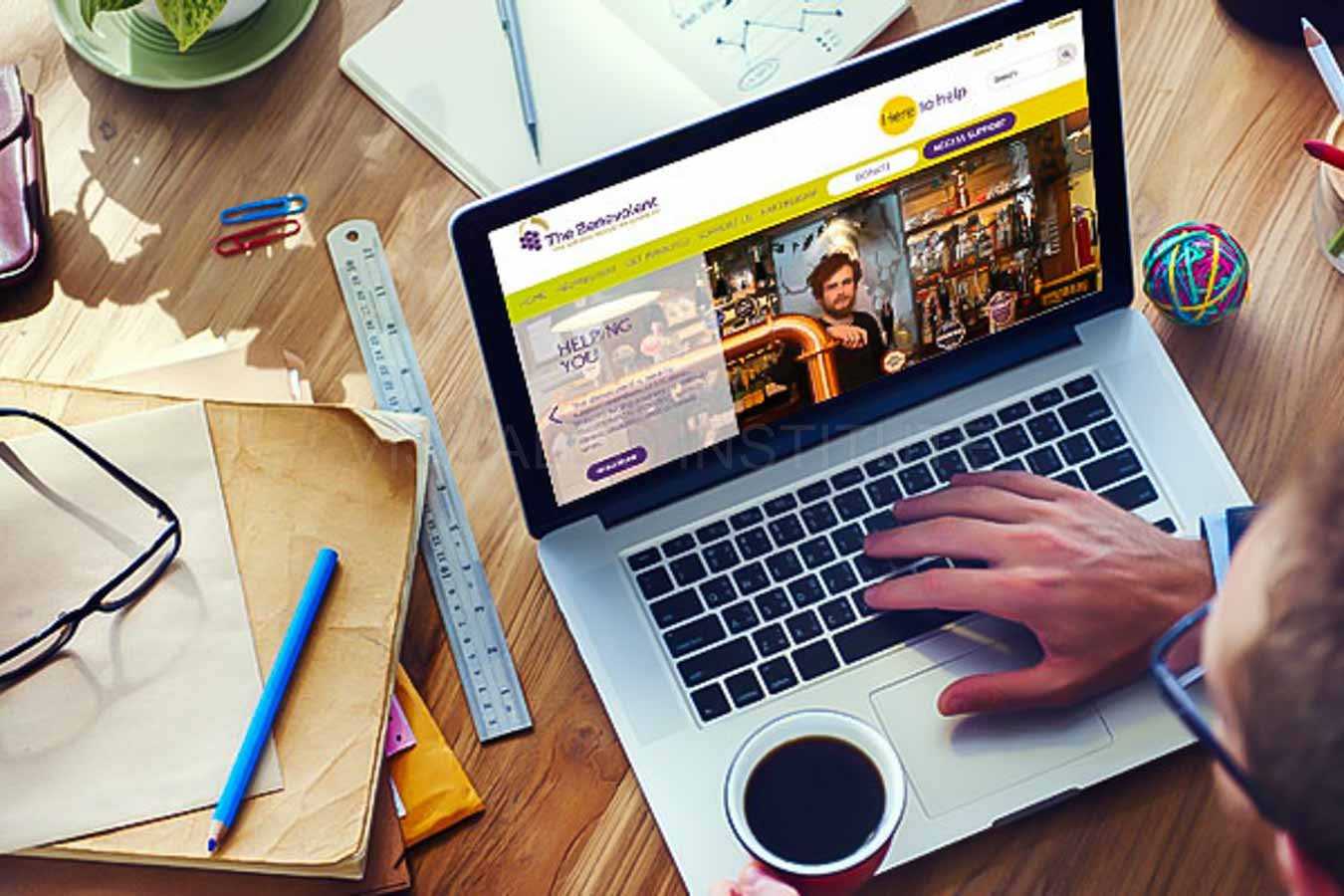How to Efficiently Combine Looks and Performance in Internet Layout
When developing a website, you need to strike a balance in between appearances and functionality. It's not almost looking great; your style must additionally offer a purpose and guide individuals successfully. By concentrating on simpleness and instinctive navigating, you can produce an interesting experience. What elements truly improve functionality while preserving visual appeal? Let's check out the crucial principles that can result in a harmonious blend of elegance and function.
Comprehending the Significance of Looks and Performance
When you create a web site, understanding the balance in between appearances and performance is vital for developing a reliable customer experience. A visually enticing site grabs attention, yet it's the performance that keeps individuals involved. Site visitors will quickly shed rate of interest and leave.Consider your target audience and what attracts them in if your site looks great yet is hard to browse. You intend to develop a design that mirrors your brand name while guaranteeing ease of usage. Structured designs, user-friendly navigation, and clear contact us to action can improve both visual appeals and capability.

Principles of Effective Website Design
To develop an efficient website design, you require to adhere to several crucial principles that improve both user experience and visual appeal. Initially, prioritize simplicity; a tidy layout aids individuals browse easily. Make use of a constant color design and typography to preserve comprehensibility across your website. This cultivates experience and trust.Next, assure your design is responsive. Individuals gain access to internet sites on numerous devices, so your design needs to adapt seamlessly. Take note of visual power structure; emphasize essential aspects with shade, dimension, or positioning to direct individuals' focus.Finally, include ample white space. It stops mess and makes content much more digestible. Keep in mind, reliable website design balances visual appeals and performance, so every style selection should serve a purpose. By following these principles, you'll create a site that's not only visually appealing but also user-friendly, ultimately maintaining visitors engaged and urging them to return.
Focusing On User Experience
When focusing on customer experience, you'll wish to start by recognizing what your individuals really require. Simplifying navigation style can make a massive difference in just how quickly they discover what they're trying to find. Also, enhancing visual hierarchy aids guide their interest to the most essential aspects on your website.
Comprehending Individual Requirements
Understanding individual needs is vital for creating an appealing internet experience that maintains site visitors coming back. To achieve this, you need to determine the goals and choices of your target audience. Beginning by conducting customer research study, like studies or meetings, to gather understandings on what users worth most. Take notice of their pain factors and obstacles when communicating with comparable sites. This information permits you to customize your style, making certain functionality lines up with user expectations. Furthermore, take into consideration creating user characters that stand for various sections of your target market, helping you imagine their demands throughout the style procedure. When you prioritize comprehending customer demands, you produce a website that not only looks fantastic however additionally delivers a seamless, delightful experience that promotes commitment.
Simplifying Navigating Style

Enhancing Aesthetic Power Structure
A solid visual pecking order is vital in assisting individuals with your website and guaranteeing they engage with crucial material. To attain this, use spacing, dimension, and shade purposefully. Make essential elements like headings larger and bolder than body message, drawing interest instantly. Make use of contrasting colors to highlight calls to action, encouraging clicks. Additionally, use ample white area to separate sections, making content digestible and inviting.Consider the circulation of info; organize aspects realistically, leading users' eyes from one indicate the following. Usage visual signs, like lines or arrows, to guide focus. By prioritizing visual pecking order, you improve user experience and raise the possibility of conversions, ensuring your website is both aesthetically pleasing and functionally effective.
Shade Theory and Its Influence On Usability
While choosing the best colors for your web site might look like a small information, it greatly affects use and user experience. Shade impacts just how users view info and can boost or impede navigation. Contrasting colors can assist essential elements stand out, making it less complicated for visitors to discover what they need.Additionally, think about the psychology of shades: blue often inspires depend on, while red produces seriousness. Recognizing your target audience can guide your shade selections, assuring they resonate well.Moreover, constant color systems aid build brand name identity, making your internet site much more memorable. Be mindful-- as well many shades can bewilder individuals. Stick to a restricted combination that enhances your content and keeps clarity.Incorporating ease of access is also crucial; validate your color combinations are pleasant for those with visual problems. By attentively using shade concept, you'll boost functionality and create an extra interesting user experience.
Typography: Balancing Style and Readability
Color options set the phase for your internet site, however typography plays an equally vital function in improving individual experience. You desire your text to interact clearly while additionally mirroring your brand's personality. Start by selecting typefaces that are not just attractive however likewise understandable. Sans-serif fonts commonly work well for electronic displays, as they're simpler to read at numerous sizes.Maintain a hierarchy by utilizing various font dimensions and weights; this overviews individuals through your content easily. Consider line spacing and letter spacing; too limited can discourage readers, while also loose can interrupt the circulation. Limit your font style selections to two or three to maintain the design cohesive.Finally, always evaluate your typography across different gadgets and internet browsers. What looks good on one display might not on one more. Balancing design with readability guarantees that your message resonates, maintaining your target market involved and informed.
Receptive Layout: Making Visual Appeals Deal With All Instruments
To guarantee your web site looks wonderful on any type of tool, you'll require to embrace receptive style concepts. This method warranties your website adapts to various screen sizes, offering an excellent user experience. Start by utilizing fluid grids and flexible images that scale effortlessly. Rather than repaired dimensions, choose portions and family member devices, permitting your layout to adjust dynamically.Next, implement media inquiries in your CSS. These let you apply different designs based on device qualities, like screen width. This way, you can maintain visual appeal while guaranteeing functionality.Don' t forget touch targets; ensure switches and web links are very easy to tap on smaller screens. Prioritize vital material, so users can easily navigate your site no matter of their tool. By concentrating on these aspects, you'll produce an appealing, visually appealing experience that fulfills the demands of all individuals, whether they're on a desktop, tablet computer, or mobile phone.
Conducting Usability Screening for Constant Renovation
To enhance your web layout, you need to set clear usability goals that align with customer demands. By carrying out customer tests, you can gather useful feedback on how genuine individuals communicate with your website. Examining these results will aid you make informed improvements and create a more reliable individual experience.
Defining Use Goals
While visual appeals can attract customers in, specifying use objectives is essential for guaranteeing their experience stays seamless and gratifying. Start by identifying what you want users to achieve on your website (website design london Ontario). Consider their actions, tasks, and demands. Are they seeking information, purchasing, or signing up for a newsletter? Develop clear standards to gauge success, like job conclusion rates or time on job. Focus on user-friendly navigation, available material, and receptive layout to enhance use. On a regular basis read more revisit these objectives as customer assumptions advance. By specifying usability goals, you produce a structure for examining and boosting your internet site's performance. This emphasis on usability not only enhances user contentment however also strengthens the total efficiency of your layout
Performing Customer Tests
Performing individual tests is crucial for fine-tuning your internet site and ensuring it meets your audience's requirements. Begin by identifying your target users and creating a test strategy that details your objectives. Make use of a mix of measurable and qualitative techniques, such as studies, interviews, and task-based observations, to gather thorough comments. Welcome participants to browse your site while you observe their interactions and note any kind of troubles they come across. Encourage open discussion to catch their thoughts and sensations concerning the layout and performance. Keep sessions brief and focused, ensuring you cover essential areas without overwhelming users. Make certain to document all searchings for, as this information will certainly be very useful for making enlightened design choices that improve both aesthetic appeals and functionality.
Analyzing Examination Outcomes
Exactly how can you properly evaluate the outcomes of your use examinations to drive continual enhancement? Begin by classifying comments into usual styles. Look for patterns in individual habits that highlight pain points or areas for improvement. Use measurable data, like job conclusion rates and time on task, to measure functionality objectively. Do not neglect to take right into account qualitative insights from customer comments; they typically reveal underlying issues that numbers can not reveal. Prioritize one of the most impactful searchings for and develop actionable things for your style group. Keep in mind, it has to do with repeating-- implement changes, then test again. This cycle of testing, analyzing, and refining helps you equilibrium visual appeals and performance, ensuring your website satisfies user needs properly while preserving visual allure.
Often Asked Inquiries
Exactly how Do I Pick the Right Color Scheme for My Internet site?
To choose the appropriate color palette for your internet site, consider your brand's individuality, target market, and emotional influence (website design london Ontario). Use color psychology, develop harmony, and guarantee readability. Test combinations to see what resonates ideal with visitors
What Devices Can Aid With Website Design Appearances and Capability?
You can use devices like Adobe XD, Figma, and Lay out to improve your web design's appearances and capability. These systems supply instinctive interfaces, collaboration features, and pre-made design templates to improve your imaginative procedure and boost your designs.
Exactly How Can I Integrate Animations Without Endangering Performance?
To incorporate computer animations without jeopardizing functionality, focus on subtle results that enhance customer experience. Use CSS animations for smoother communications, guarantee quick load times, and test on various tools to keep performance while adding aesthetic appeal.
What Are Usual Mistakes to Prevent in Web Style Looks?
When designing, avoid chaotic layouts, poor color choices, and inconsistent typefaces. Do not neglect mobile responsiveness, as it can estrange users. Confirm your layout lines up with your brand name, developing a seamless experience that involves visitors effectively.
How Commonly Should I Update My Website's Design for Optimal Visual Appeals?
You should upgrade your web site's design every 1-2 years to stay on top of patterns and maintain optimal aesthetics. Consistently renewing visuals assists involve assurances and visitors your website stays appealing and easy to use. When you create an internet site, recognizing the equilibrium in between aesthetics and capability is vital for producing an effective individual experience. To create a reliable web design, you need to stick to numerous key concepts that enhance both individual experience and visual appeal. Users accessibility websites on various gadgets, so your design ought to adapt effortlessly. When focusing on individual experience, you'll desire to begin by recognizing what your individuals really need. Beginning by performing customer research, like surveys or meetings, to collect insights on what customers value most.